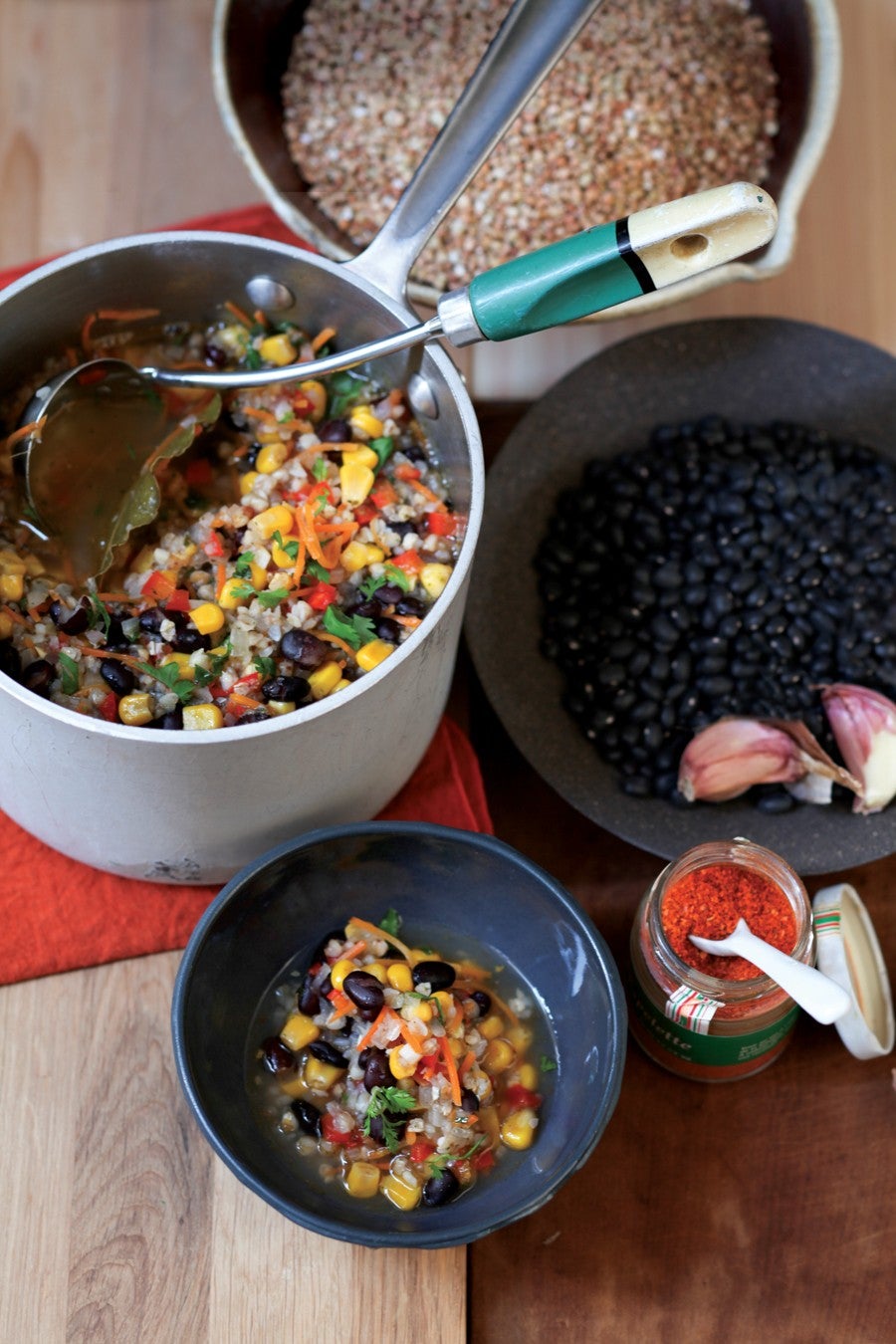Cooking with Kasha

The Scoop
Don’t be fooled by the old-fashioned packaging and Jewish-grandma-recipe reputation of kasha and buckwheat groats. These roasted and raw seeds from the flowering Fagopyrum esculentum Moench plant have as many cool uses as more-hyped grains, such as quinoa, millet, or amaranth. Once hulled, the quick-cooking triangular kernelssold raw as buckwheat groats or roasted as kashahave a chewy, tender texture similar to larger whole grains. That makes them ideal substitutes for gluten-laden options such as spelt, wheat berries, bulgur, and barley.
How It’s Used
Jewish and Eastern European cooks are familiar with kasha as a nutty-flavored component of kasha varnishkes, a mix of kasha and bow tie pasta. Kasha and buckwheat groats fill out soups and stews, add body to salads, complete casseroles, and bulk up stuffings and side dishes. They also make a quick alternative to rice or potatoes, and can be prepared with water or milk for a hot breakfast cereal.
The main difference between kasha and buckwheat groats is flavor. Roasting the groats gives kasha an earthy, slightly bitter taste that some people love; others find it overpowering. Raw groats are milder and closer in taste and texture to other whole grains.
Shopping Tips
Shop for kasha and buckwheat groats in natural food stores where a higher turnover means fresher stock. Look for whole kernels with few broken pieces. Rinse and drain before cooking to remove crushed bits.
RECIPE:
Buckwheat-Black Bean Soup(pictured)